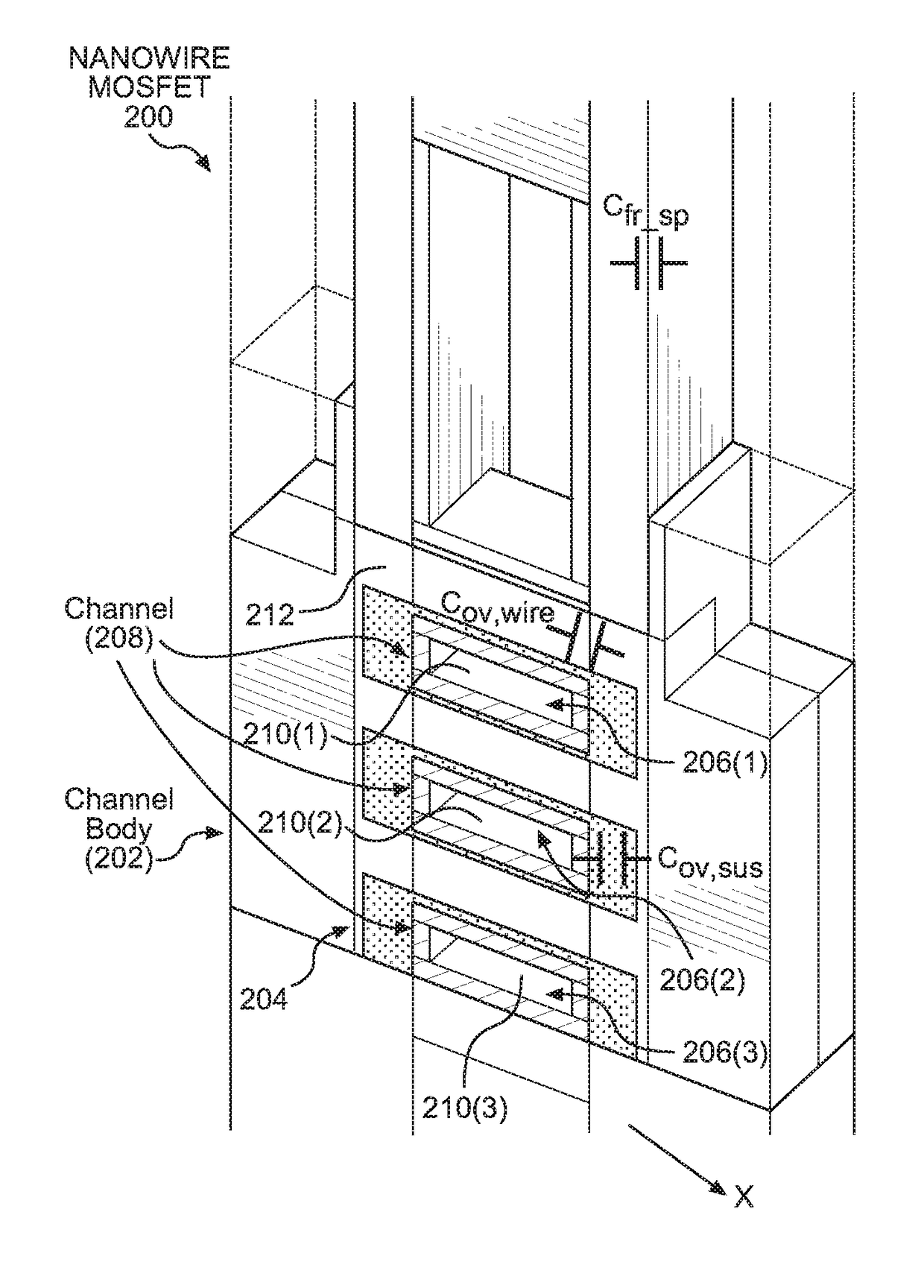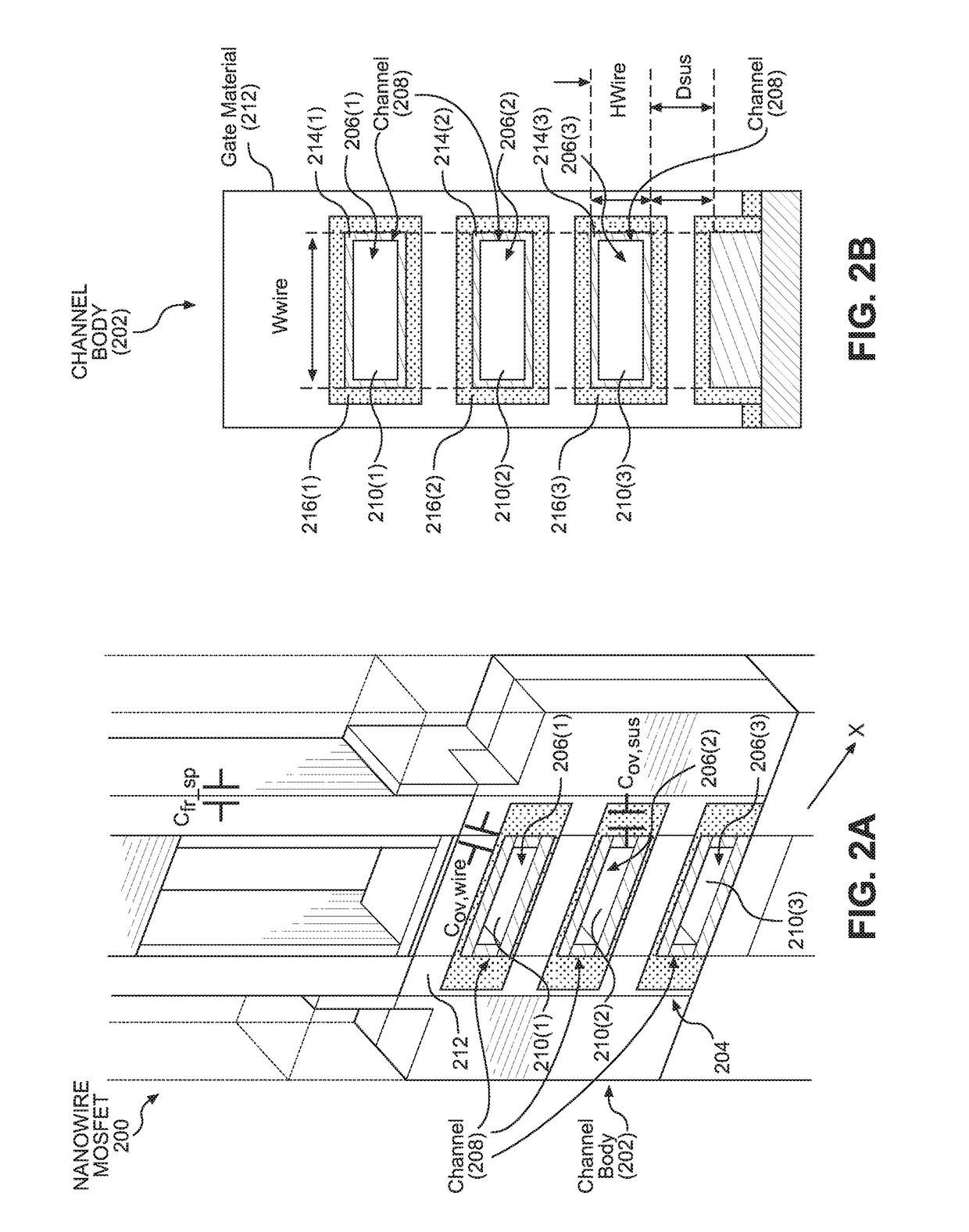NANOWIRE METAL-OXIDE SEMICONDUCTOR (MOS) FIELD-EFFECT TRANSISTORS (FETs) (MOSFETs) EMPLOYING A NANOWIRE CHANNEL STRUCTURE EMPLOYING RECESSED CONDUCTIVE STRUCTURES FOR CONDUCTIVELY COUPLING NANOWIRE STRUCTURES
a metal-oxide semiconductor and nanowire technology, applied in the field of metal-oxide semiconductor (mos) field-effect transistors (fets) (mosfets), can solve the problems of increasing gate resistance, reducing electrostatic control of the channel, increasing the delay of the nanowire mosfet, etc., to reduce leakage current, increase drive strength, and small channel length
- Summary
- Abstract
- Description
- Claims
- Application Information
AI Technical Summary
Benefits of technology
Problems solved by technology
Method used
Image
Examples
Embodiment Construction
[0030]With reference now to the drawing figures, several exemplary aspects of the present disclosure are described. The word “exemplary” is used herein to mean “serving as an example, instance, or illustration.” Any aspect described herein as “exemplary” is not necessarily to be construed as preferred or advantageous over other aspects.
[0031]Aspects of the present disclosure involve nanowire metal-oxide semiconductor (MOS) Field-Effect Transistors (FETs) (MOSFETs) employing a nanowire channel structure employing recessed conductive structures for conductively coupling nanowire structures. The use of a nanowire channel structure in a MOSFET provides for an effective smaller channel length as compared to planar transistors to increase drive strength with strong electrostatic gate control of the channel to reduce leakage current. To increase the effective channel width of the nanowire channel structure for increased drive strength (i.e., drive current), multiple nanowire structures can...
PUM
| Property | Measurement | Unit |
|---|---|---|
| width | aaaaa | aaaaa |
| width | aaaaa | aaaaa |
| sizes | aaaaa | aaaaa |
Abstract
Description
Claims
Application Information
 Login to View More
Login to View More - R&D
- Intellectual Property
- Life Sciences
- Materials
- Tech Scout
- Unparalleled Data Quality
- Higher Quality Content
- 60% Fewer Hallucinations
Browse by: Latest US Patents, China's latest patents, Technical Efficacy Thesaurus, Application Domain, Technology Topic, Popular Technical Reports.
© 2025 PatSnap. All rights reserved.Legal|Privacy policy|Modern Slavery Act Transparency Statement|Sitemap|About US| Contact US: help@patsnap.com



